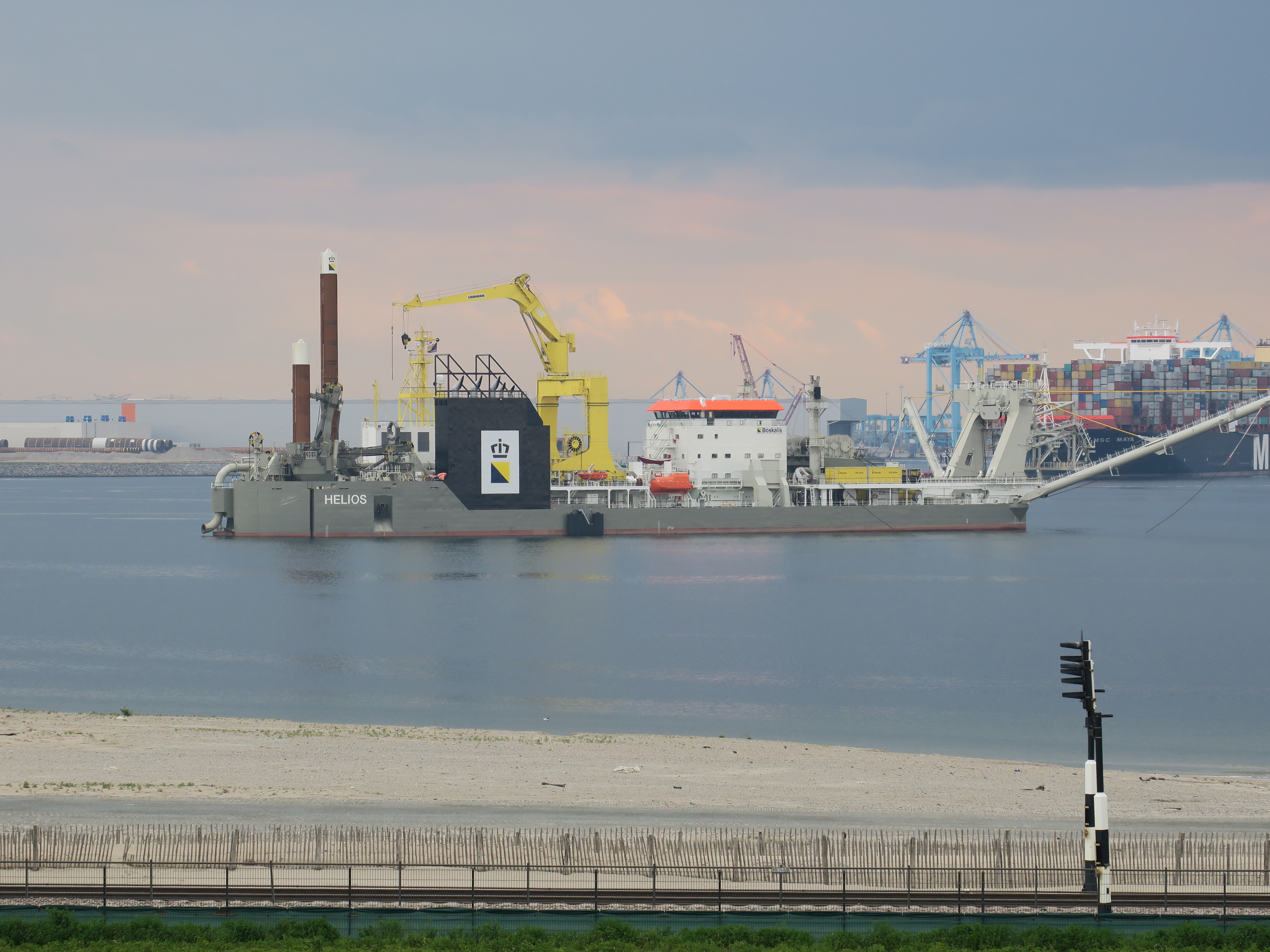Overcoming challenges in port expansion

The global trade industry is the lifeblood of the world's economy. As international trade continues to grow, so does the demand for more efficient infrastructure and the need to accommodate ever-larger cargo vessels. Port expansions have become essential for meeting these demands, and this challenge is not unique to any one port. Wanting to maintain its leading position in Europe, the Port of Rotterdam, Europe's largest and one of the world's biggest ports, faced formidable challenges as it embarked on its journey to expand its facilities.
Expanding seawards
Around the year 2000, it became increasingly evident that the Port of Rotterdam was fast approaching its maximum capacity within the existing port area. Wedged between urban areas in the north and precious rural areas, the Port Authority was confronted with a challenge: How to expand when there's no more land available? The only option was to expand seaward. This marked the beginning of the ambitious Maasvlakte 2 project.
Maasvlakte 2: land reclamation of 2,000 hectares land
The Maasvlakte 2 project involved the reclamation of 2,000 hectares of land in various phases. The first phase required the construction of 700 additional hectares of port area, 4.5 kilometers of quays, 3.5 kilometers of seawalls, and 7.5 kilometers of beaches and dunes.
It is a testament to the Port of Rotterdam's determination to adapt and grow in the face of monumental challenges. It serves as an example of innovative thinking, technical prowess, and resilience, positioning the port to continue playing a pivotal role in the global trade landscape.
Dredging challenges
The heart of Maasvlakte 2's land reclamation was dredging. In total, over 11,000 hopper loads were needed to dredge 240 million cubic metres of sand to create the new land. This comprised 200 million cubic metres of sand from offshore sand extraction sites on the North Sea, and an additional 40 million cubic metres of sand gained by deepening the port basins and removing an existing port area to create an entrance to the new section.
The dredging presented its own set of challenges.
1. Vessel Capacity
Dredging on such a massive scale required specialized vessels that have capacity and capability to handle the immense volume of sand.
- Trailing suction hopper dredgers: increase efficiency of dredging process
Vital tools for accomplishing the project Maasvlakte 2 included trailing suction hopper dredgers (TSHDs) that dredged the necessary sand out at sea and brought it back to the project site. The introduction, several years earlier, of swell compensators on board hopper dredgers has also played a major part in increasing the efficiency of the dredging process in offshore sea conditions. - Cutter suction dredgers: dredge hard ground
To deepen the port, Boskalis supplied its mega cutter suction dredger (CSD) HELIOS to Maasvlakte 2. The CSD pumped the dredged sand directly into the reclamation area by means of a floating pipeline connected to a constellation of land lines. The self-propelled vessel is able to dredge in extremely hard ground at depths of between six and 35 metres and is one of the most powerful CSDs in the dredging industry.
2. Offshore Conditions
Dredging in offshore conditions, especially in the North Sea, is notoriously challenging due to the unpredictable and often rough sea conditions. Ensuring the safety of personnel and the efficient operation of dredging equipment in these conditions was a significant challenge.
3. Deepening Port Basins
In order to stay at the forefront as a port, you need to be able to accommodate increasingly larger vessels. That requires your port to become deeper. Deepening port basins to create an entrance to the new section involved technical challenges, including the removal of existing port areas, and careful engineering to ensure safe navigation.
4. Sustainable port expansion
As the world pays more attention to being eco-friendly, it is crucial for ports to expand in a sustainable way. Ports now need to think about the long-term impact on the environment, making sure future port expansions don't harm marine life and coastlines.
How IHC Dredging can help you
As a supplier of dredging equipment, it is our job to create the equipment that makes projects such as this one possible in the first place. To do this, we need to understand not only our clients' business cases and requirements, and those of their customers, such as port authorities. Only with a deep understanding of where and why these mighty vessels will be used can an optimal solution be developed.
Innovative solutions
Through an understanding of the environment in which the dredger will be operating, we are able to incorporate innovative solutions into the design of the vessel. In the case of the Helios, this meant that we took on the challenge of building one of the largest and most powerful CSDs in the world. In this way, the Port Authority in Rotterdam has been able to fulfil its vision and expand the port.

Do you want to discuss your port expansion challenge?
Fill in the form and our experts will contact you.